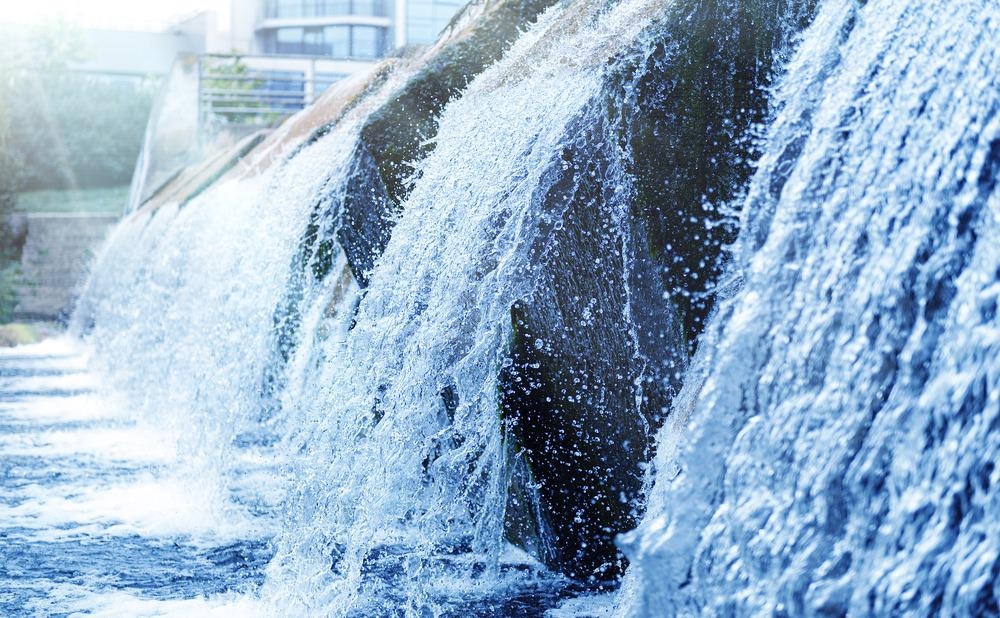Water contaminated with toxic metal ions such as lead is a major cause of the spread of deadly illnesses and disorders. The creation of one-pot production of iron-oxide incorporated into a reduced graphene oxide (rGO) nanocomposite to remove hazardous lead ions from contaminated water is the topic of a recent study available in the journal Materials Today: Proceedings.

Study: Synthesis of magnetite-graphene nanocomposite for wastewater treatment. Image Credit: Peter Milto/Shutterstock.com
Heavy Metal Contamination of Water
Heavy metals are naturally present elements with a high atomic mass and at least five times the density of water. Their extensive dispersion in the environment has resulted from their many industrial, residential, agricultural, medicinal, and technical uses, raising concerns about their possible consequences on public health and the environment.
Because of their cytotoxicity and non-biodegradable characteristics, heavy metal ions poisoning in freshwater environments poses a serious hazard to all aquatic organisms. These hazardous ions aggregate rapidly in living organisms but are not readily decomposed, resulting in the mass death of marine organisms.
Lead (Pb (II)) Ion: The Most Common Heavy Metal Pollutant
Lead is a bluish-gray metal that occurs naturally in trace quantities in the earth's crust. Although lead naturally exists in the ecosystem, industrial activities such as fossil fuel combustion, quarrying, and mass production result in the release of excessive quantities.
It is the most frequent heavy metal pollution, and at concentrations of more than 0.01 ppm and 0.015 ppm, respectively, it is harmful to aquatic organisms and humans.
Several studies have found that lead ions hinder aquatic organisms' transformation process, neurobiology, and other developmental processes. At the same time, long-term exposure to this poisonous metal ion may harm humans' brains, hearts, kidneys, and reproductive systems. As a result, industrial effluent water must be treated before releasing it into the environment.
Limitations of Previous Water Treatment Methods
Toxic metal ions have conventionally been removed by adsorption, aggregation, flocculation, precipitation, filtering, and catalytic decomposition. Adsorption is the most effective wastewater separating process. Consequently, a wide range of materials, from organic to synthetic, have been utilized as adsorbents. Regrettably, these compounds have low adsorption and recovery characteristics.
Graphene, graphene compounds, and graphene composite materials have recently surfaced as potential alternatives for water treatment due to their outstanding properties such as large surface area, availability of various adsorption sites on its surface, and pi-electron movement on the carbon matrix.
However, single-layer graphene manufacturing is costly and not appropriate for huge volumes. As a result, graphene oxide (GO) and reduced graphene oxide (rGO) is utilized as an alternative. Following adsorption, the separation of these components is difficult. In recent times, a magnetic nano adsorbent has been proposed as a solution to this problem.
A Novel Iron-oxide Embedded rGO Nanocomposite for Water Treatment
Because of their high magnetization, cytocompatibility, and catalytic performance, iron-oxide (Fe3O4) magnetic nanoparticles are extensively employed in a variety of applications, including sensing, bioengineering, magnetic storing, and environmental remediation. rGO-Fe3O4 nanocomposite (mrGO) may function as an ideal adsorbent by combining the strengths of rGO's adsorption ability and Fe3O4's magnetic capability.
In this study, the researchers proposed a simple technique for producing mrGO as well as a thorough examination of Pb (II) absorption by mrGO composite. The improved hummers method (IHM) was used to create GO initially, and then the hydrothermal method was used to create magnetite nanoparticles on rGO films. Various characterization methods were used to examine the morphology and surface properties of the prepared nanocomposite.
The synthesized mrGO was tested for lead ion removal. Isotherm and kinetic investigations of mrGO were carried out to determine the maximal extraction efficiency and the process of lead ion adsorption onto mrGO nanoparticles.
Key Findings of the Study
The preparation of mrGO was accomplished using a one-pot hydrothermal method. A structural and morphological study validated the effective creation of extremely porous mrGO using several characterization methods. The adsorption analysis revealed that mrGO is a strong option for Pb (II) removal.
The kinetic investigation verified that the adsorption of Pb (II) ions onto newly created mrGO matches the PSO kinetic model, suggesting surface complexation. All of these findings suggest that the mrGO compound is an effective option for removing Pb (II) ions from water. It may also be employed as a possible adsorbent for other contaminants. This study demonstrates that mrGO nanocomposite is a viable and environmentally friendly adsorbent with considerable promise in the treatment of wastewater.
Reference
Sahu, P. S. et al. (2022). Synthesis of magnetite-graphene nanocomposite for wastewater treatment. Materials Today: Proceedings. Available at: https://doi.org/10.1016/j.matpr.2022.04.99
Disclaimer: The views expressed here are those of the author expressed in their private capacity and do not necessarily represent the views of AZoM.com Limited T/A AZoNetwork the owner and operator of this website. This disclaimer forms part of the Terms and conditions of use of this website.